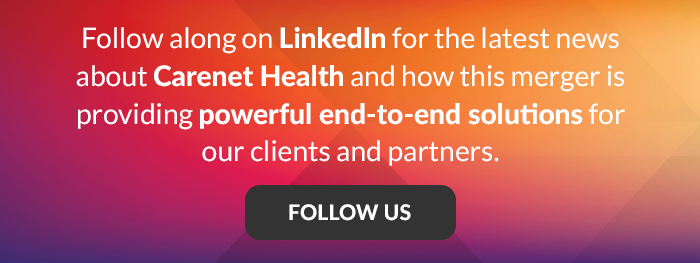As the healthcare industry faces significant headwinds in 2023, Carenet Health has identified seven predictions related to key trends that will shape the healthcare landscape in the year ahead. Based on our 2023 Healthcare Consumer Engagement Forecast, this two-part blog will highlight strategies that payers and providers can focus on as inflation and other challenges threaten the bottom line.
Part 1 will explore inflationary pressures that will continue to impact healthcare consumers and organizations, the need for innovative solutions to contend with labor shortages, and the growing importance of consumerism in the year ahead and beyond.
1. Inflation Will Continue to Impact the Healthcare Space
Economic uncertainty brings with it a range of emotions for consumers – confusion, anxiety, and fear –as no one knows if the situation is going to improve or deteriorate. As consumers become more focused on all expenditures, including health costs, the deferred care crisis will be exacerbated by fears of the financial unknown.
For payers and providers, inflation equates to threats to the bottom line, and the negative impact in 2022 was nothing short of staggering. Last year, U.S. hospitals suffered billions of dollars in losses and some estimates report that more than two-thirds of hospitals had negative margins.
There appears to be no relief in sight, at least for the near-term. Fitch Ratings is projecting “a very bumpy 2023” for the hospital industry. Many healthcare leaders are bracing for a continued decline in operating margins, and hospital closures and bankruptcies loom on the horizon. Additionally, according to a survey conducted by the Conference Board, more than half of healthcare CEOs believe inflationary pressures will last until mid-2023 or beyond.
To fight back against inflation and continue serving the needs of consumers, payers and providers can prioritize the consumer experience by fostering trust with patients and members. This leads to better retention, higher feedback scores, and better health outcomes.
Other suggestions include:
- Addressing system inefficiencies by fortifying rural health capacity, streamlining supply chains, and developing talent pipelines
- Providing training opportunities for overtaxed workforces to build valuable new skills and increase retention
- Optimizing digital tools and technology to make options like ambulatory surgery centers and home healthcare more accessible
2. Innovative Solutions Will Be Needed to Address the Labor Shortage
Fueled by an exodus of clinicians, nurses, and support staff following the height of the pandemic, the labor shortage in healthcare has reached acute levels. For example, a 2022 survey conducted by McKinsey & Company found that 29% of responding registered nurses expect to leave their current role in direct patient care, with many indicating they intend to leave the workforce entirely.
Although its impact on staffing shortages was significant, the pandemic isn’t entirely to blame. Prior to 2020, burnout was already taking a toll on doctors and nurses. Added to this, administrative staffers are contending with noncompetitive wages, long work hours, and a perceived lack of advancement opportunities, placing further strain on the workforce.
Clinicians are also stressing the need for a complete transformation of the care model and more investment in technology to help increase their time spent on patient care.
Resolving the labor shortage will require new ways of looking at the traditional staffing model, including:
- Hiring highly skilled offshore nurses and clinicians at advantageous price points
- Finding technical solutions that help stretch the workforce, such as “tele-sitting” programs that use bedside cameras and speakers to assist nurses virtually
- Developing pathway programs from schools into health systems that start at the community college level and provide a road to employment, helping fill care gaps in rural areas
- Creating apprenticeship programs that address skill and talent gaps for medical assistants
- Identifying medical gig economy platforms, where facilities can find traveling nurses to provide temporary staffing help in times of need
3. Consumerism Will Play an Increasingly Important Role
As plans and providers typically assert control and dictate the terms, patients are often faced with limited options when it comes to how they are served. Simply put, the approach taken by providers and payers may be construed as “My way or the highway.” As the landscape across the healthcare continuum evolves, consumerism and customer experience need to be prioritized.
The patient journey roadmap is changing, and consumers today expect something better than the old way of doing business. They want personalized customer service, they want to be appreciated, and they want transparency from providers and payers. As healthcare consumer expectations continue to rise and demographics change, consumerism has become more important than ever.
Being served as a consumer, healthcare costs, quality of care, and convenient access to treatment are all top-of-mind for patients and plan members today. And, with the increasing presence of nontraditional players, including health-tech startups and major retailers, consumer-focused engagement strategies and efficiency-boosting technical tools will be critical.
Another key aspect of consumerism is understanding the preferences of millennials, those born between the early 80s and mid-90s. For example, when it comes to primary care – once a foundation of the industry – many millennials don’t prioritize scheduling doctor appointments regularly and don’t recognize the value of the primary care model. One study revealed that more than one-third of people aged 25 to 34 said they don’t trust their providers.
In order to unlock the potential for true healthcare consumerism, the industry will need to address consumers’ mistrust as it relates to channels, reliability, and credibility as well as making access to care simpler, personalized, and more convenient.
Stay tuned for the second part of this blog, in which we will highlight four more trends that will play a significant role in shaping the healthcare space in the weeks and months ahead.
Follow along on LinkedIn for the latest news about Carenet Health.

